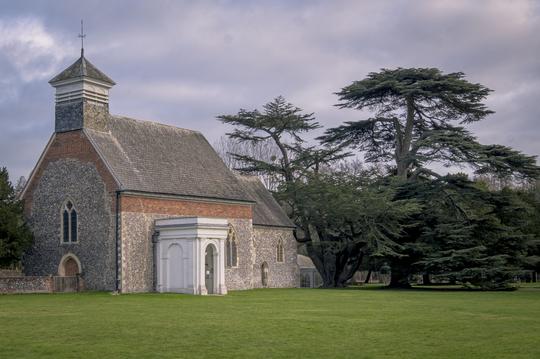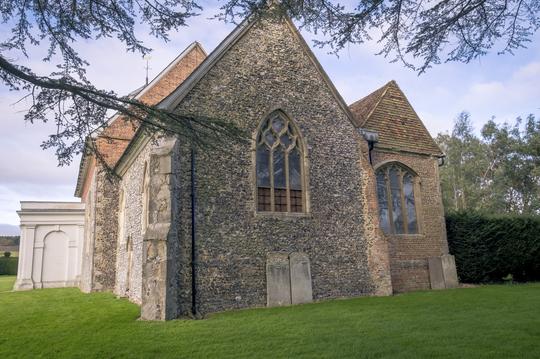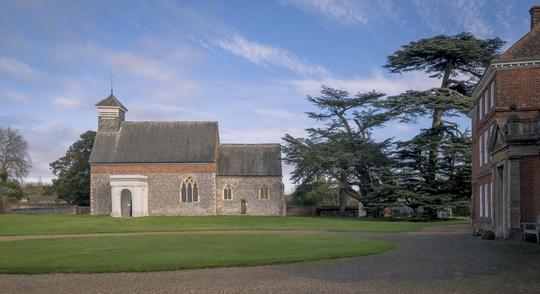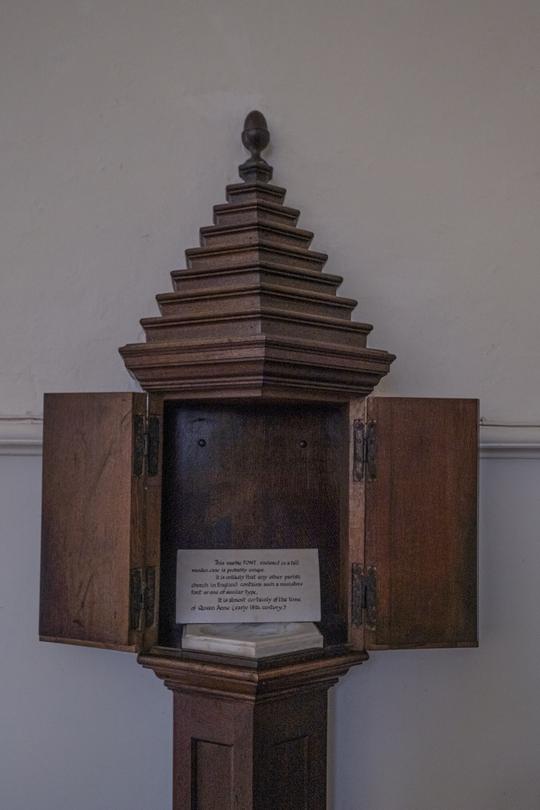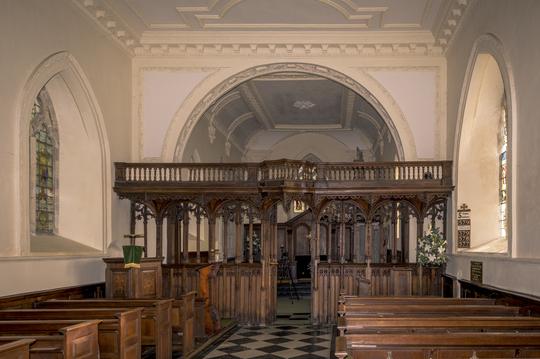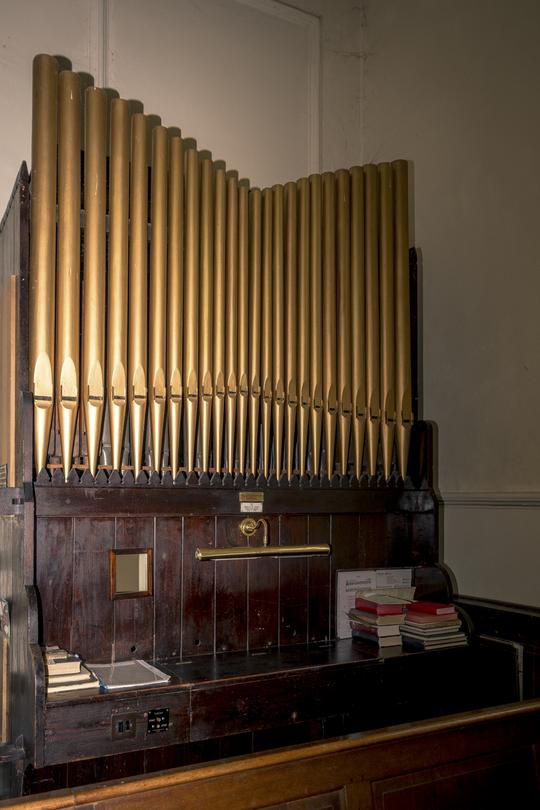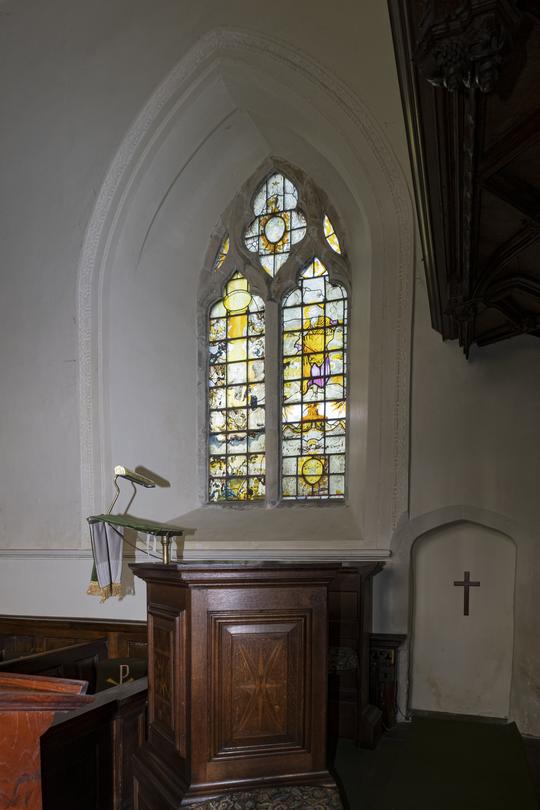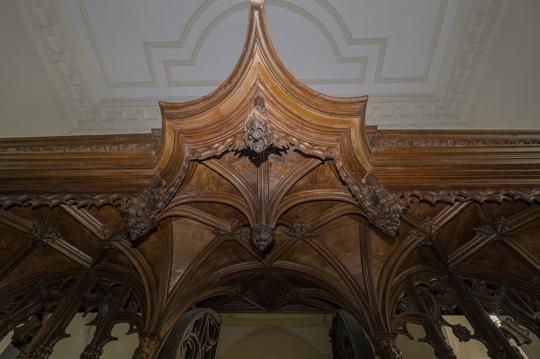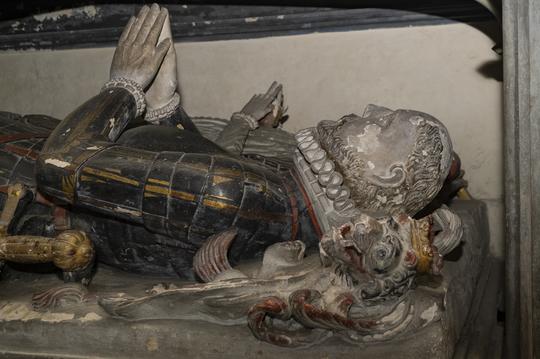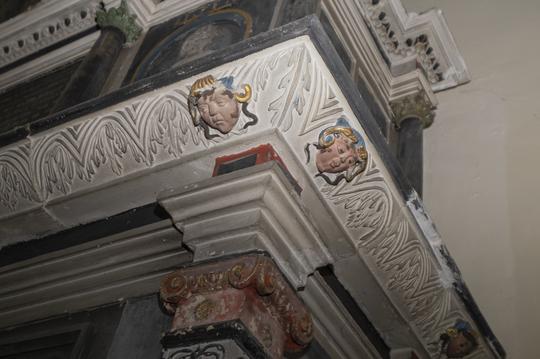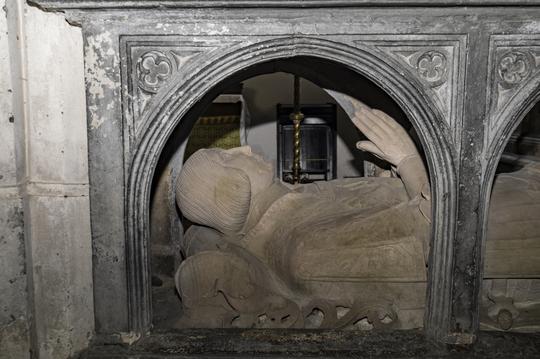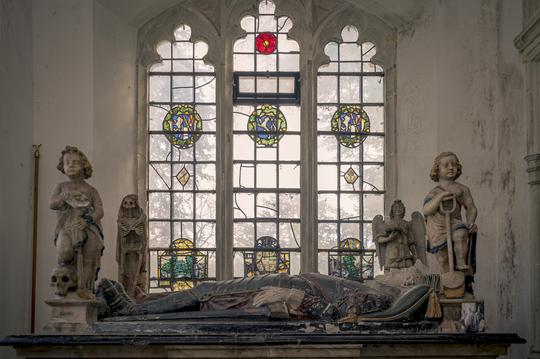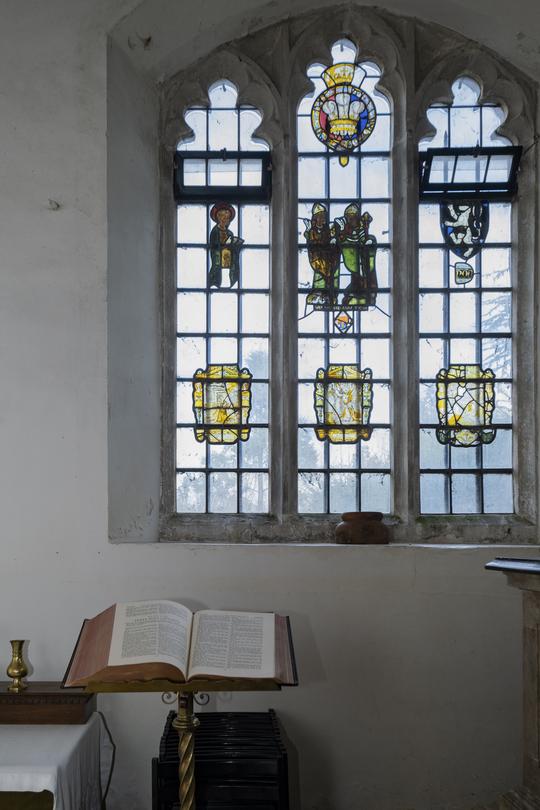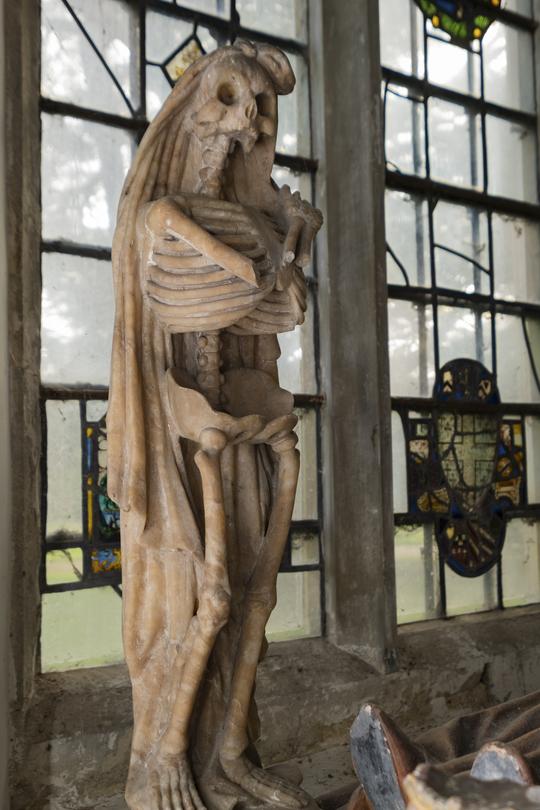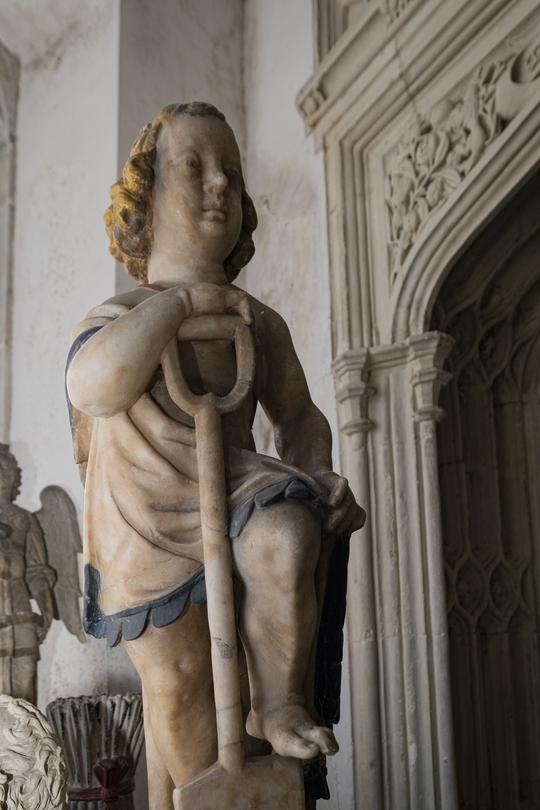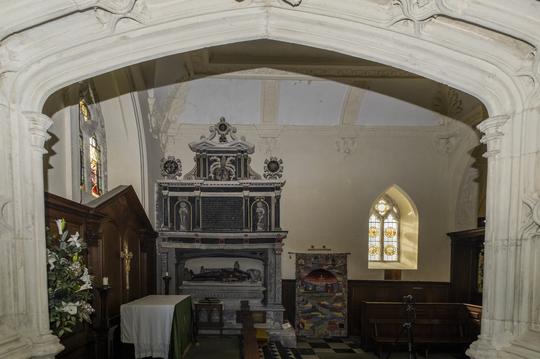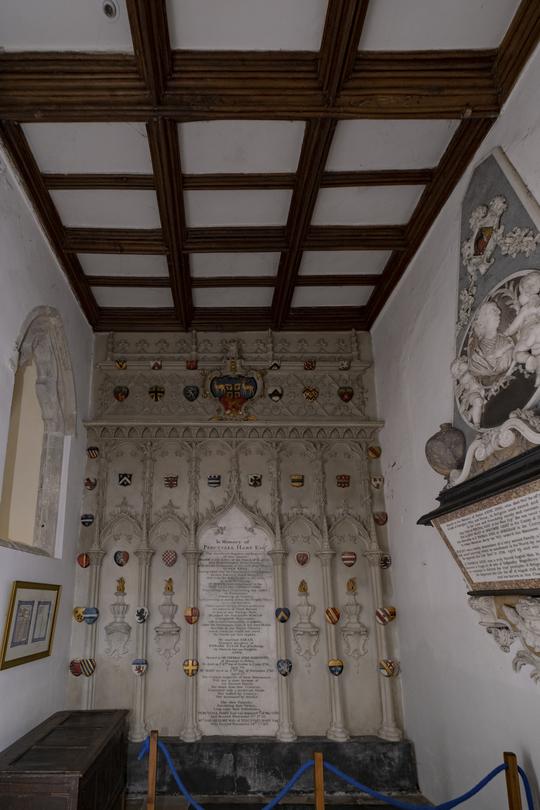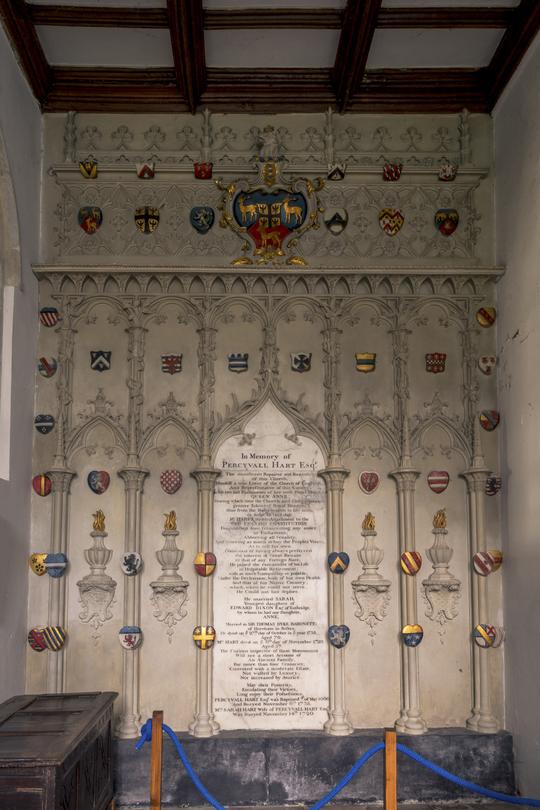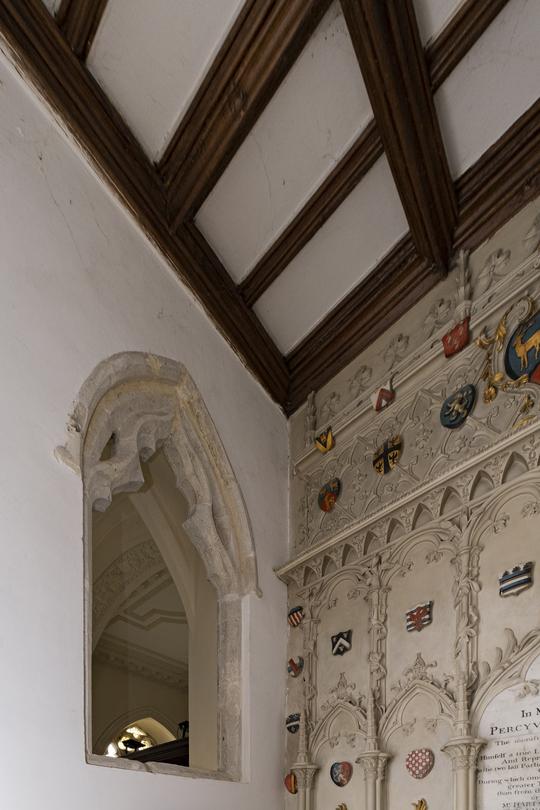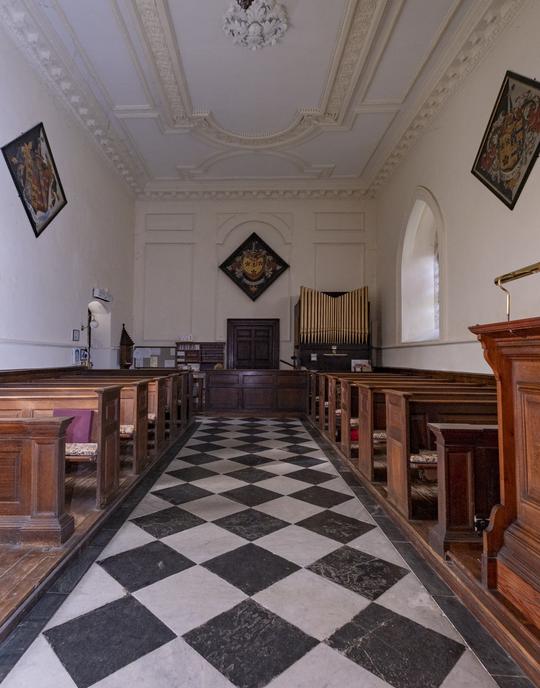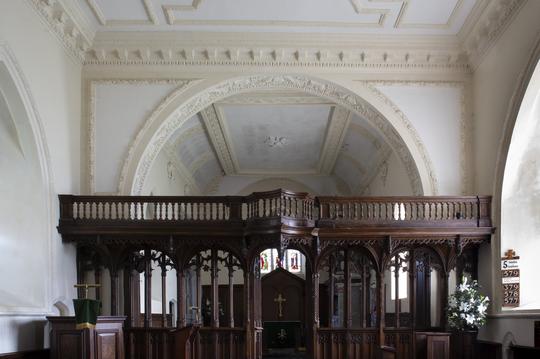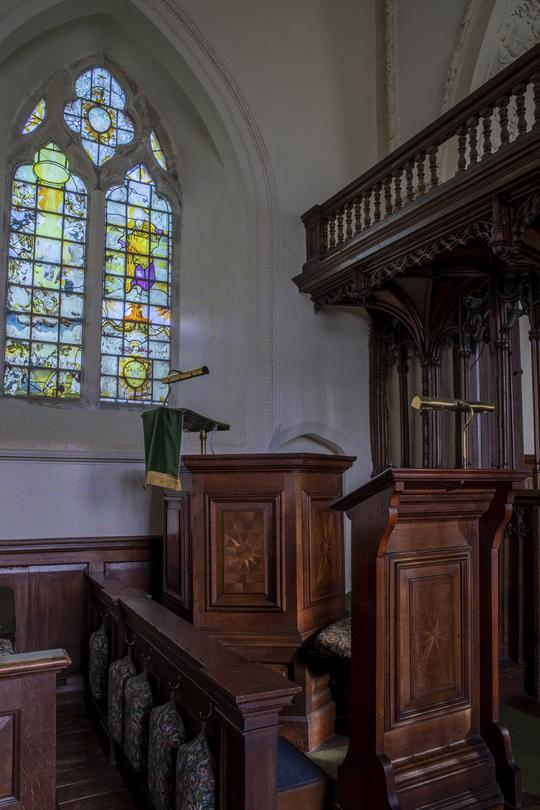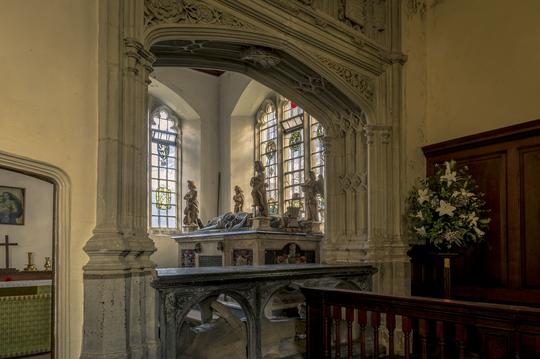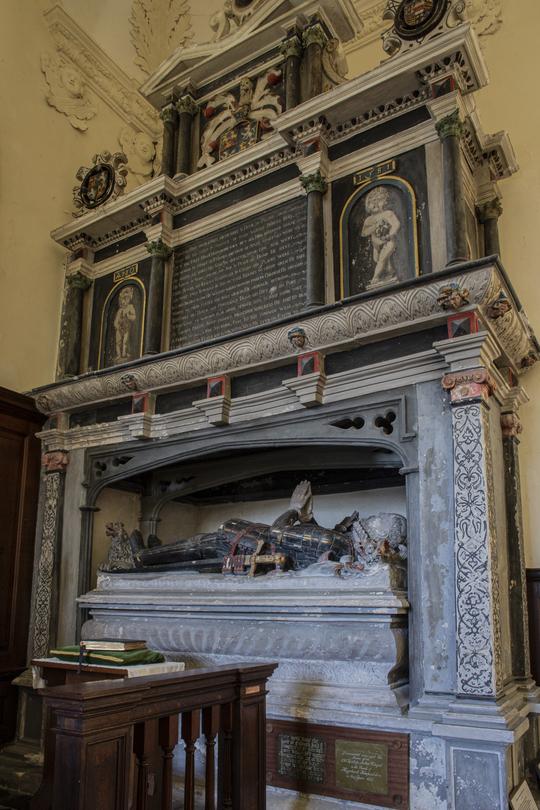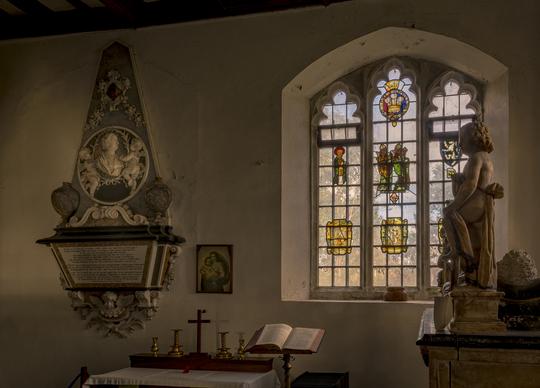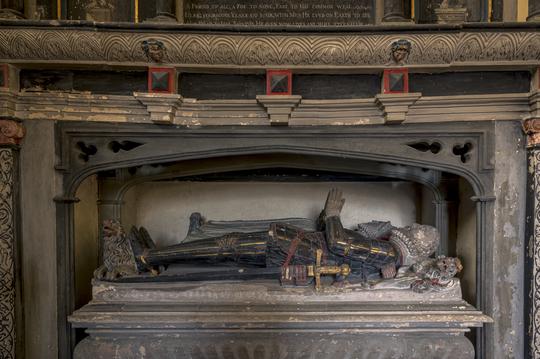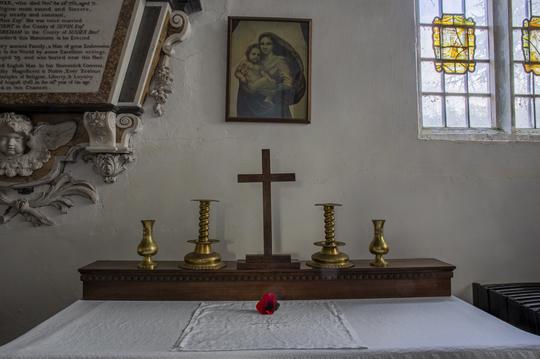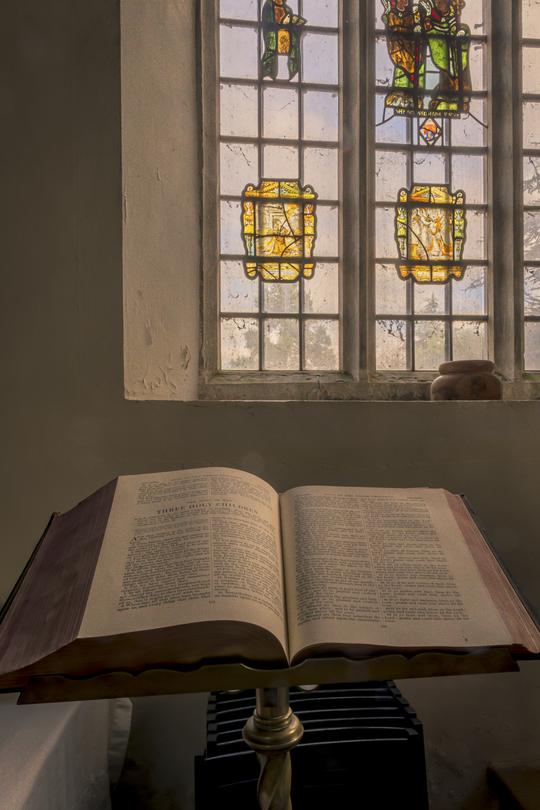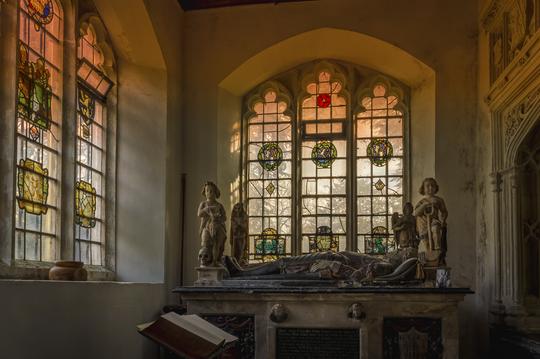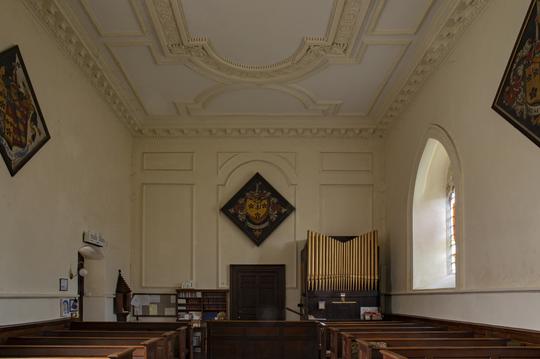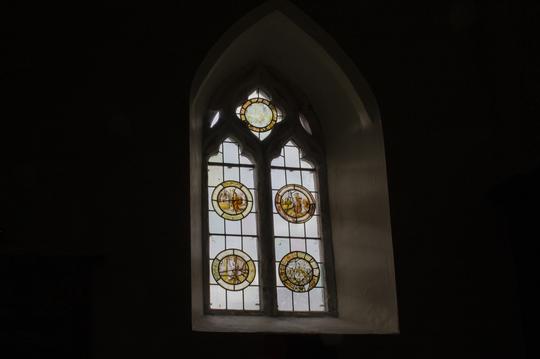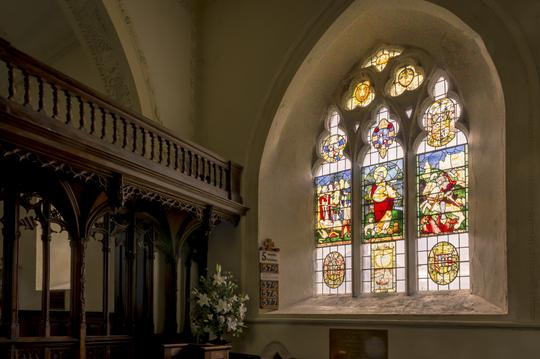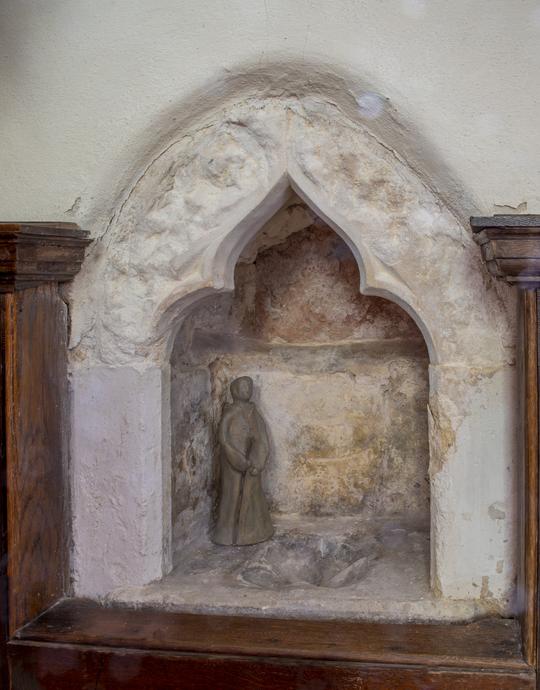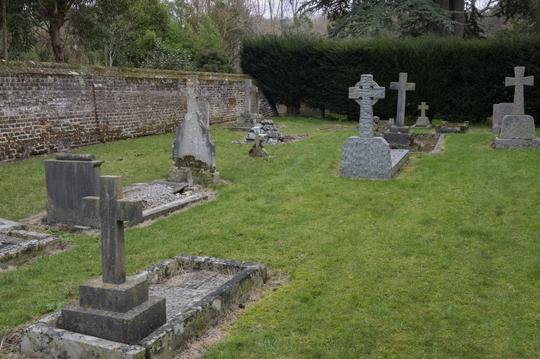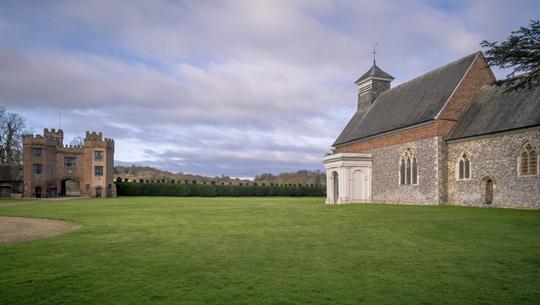St Botolph's Lullingstone
In its delightful setting on the lawn, St Botolph’s is sometimes mistaken for a private chapel. Although its history is entwined with the Peché-Hart-Dyke family, it is a parish church. The idiosyncratic exterior expresses changes to the church over the centuries.
The flint church was built around 1349 in the Decorated style. The north chapel, built of brick in the early 16th century, was the bequest of Sir John Peché to accommodate his magnificent tomb in the wall between the chancel and chapel. The full length figure equipped for the joust is carved in exquisite detail.
The early 16th century carved rood screen, the gift of Sir John Peché, is decorated as the tomb; with the pomegranate badges of Katherine of Aragon and Tudor roses. Peach stones carved with the letter 'e' pun the name Peachey, the anglicised pronunciation of the name Peché. The balustrade above was a later addition. In the 18th century Percyvall Hart IV added thirteen courses of brick to the nave, heightening the roof to accommodate an ornate plaster ceiling and a south porch.
Among the many treasures inside the church is the tiny early 18th century marble font enclosed in a tall wooden case which stands by the door.
https://www.nationalchurchestrust.org/church/st-botolph-lullingstone
